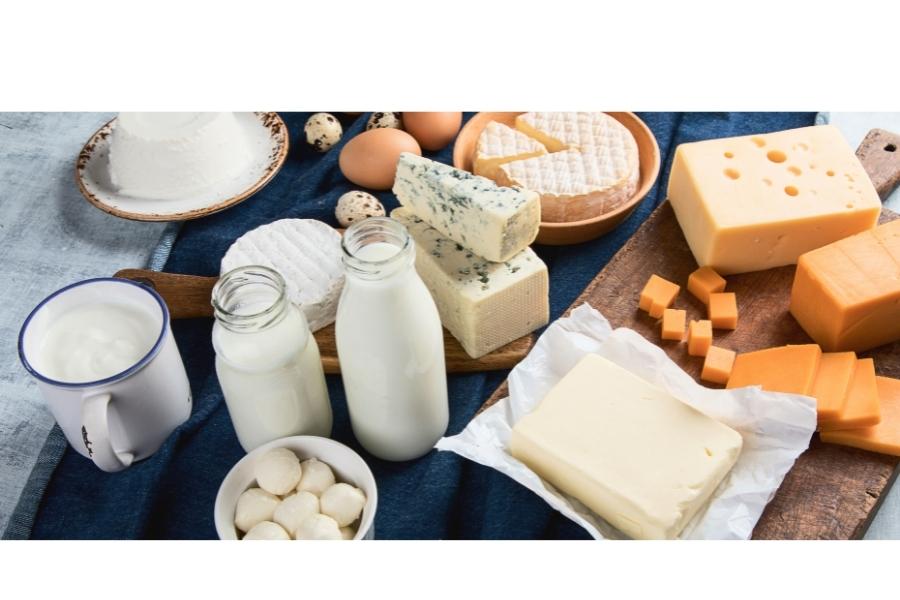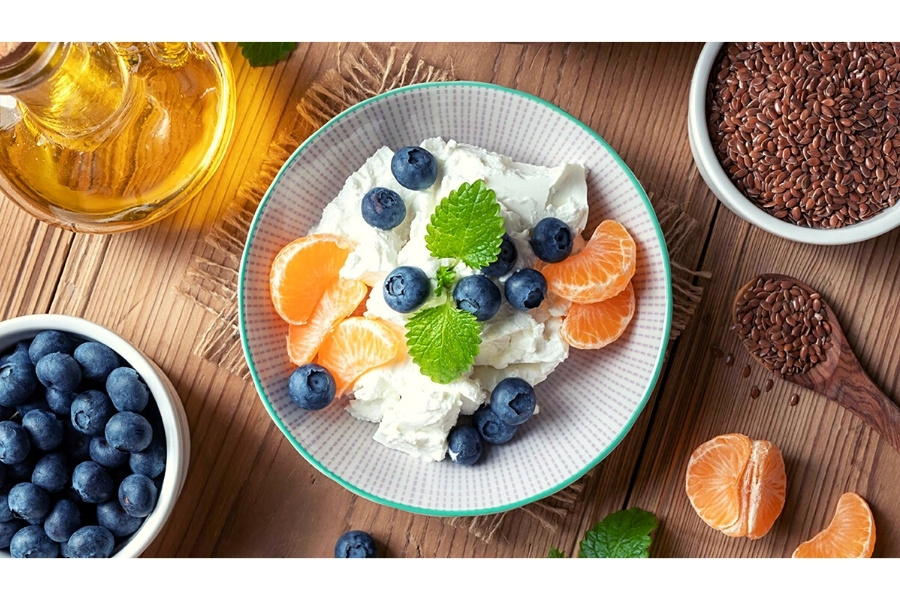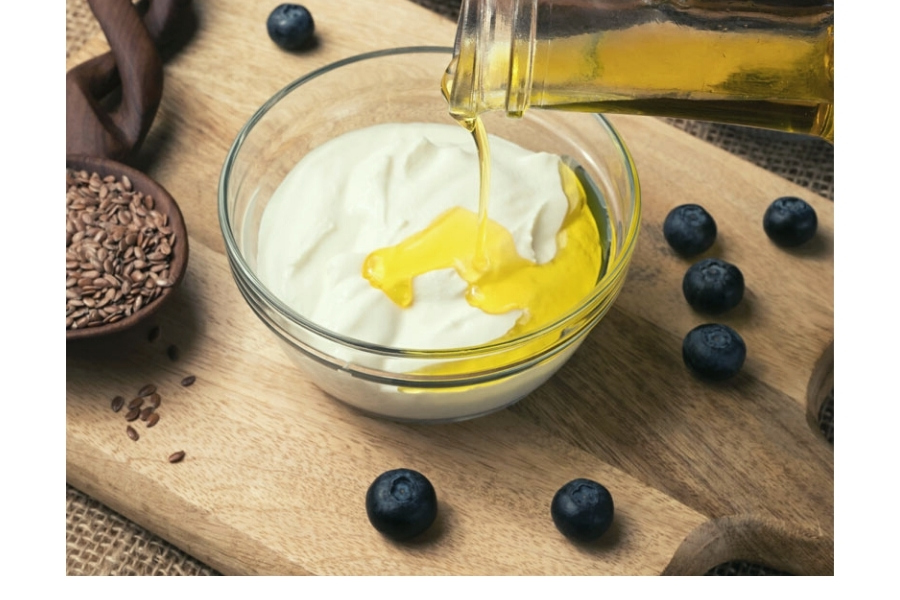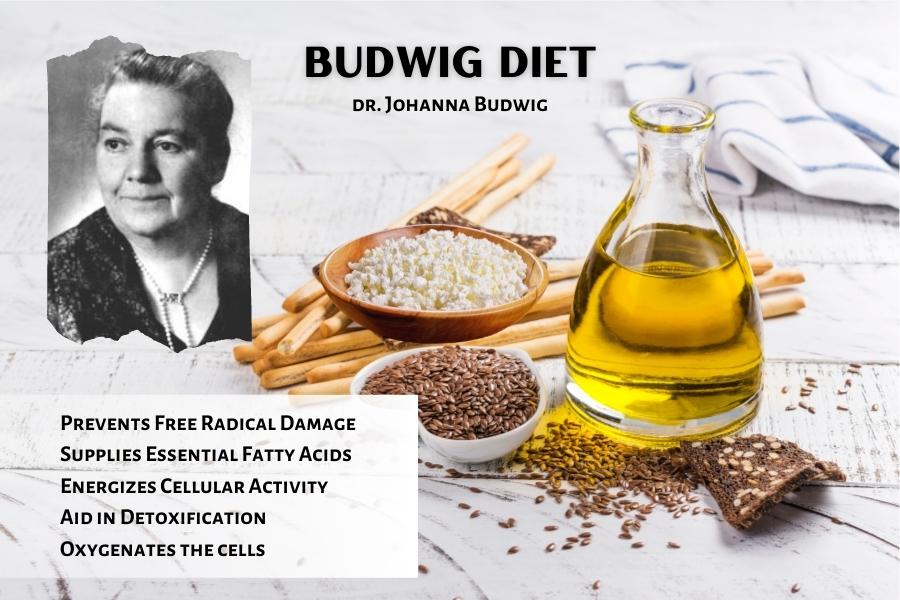“What is the best diet for a person with cancer?” It is a frequently asked question I’ve received throughout the years. While I don’t pretend to be a cancer curer, I do feel there’s enough evidence that certain healing foods, herbs, and therapies can aid in the fight against and prevention of life threatening illness.
The Budwig Diet, also known as the Budwig Protocol, is a dietary therapy that has been proven to assist prevent cancer. I think the Budwig Diet is an excellent choice for lowering your risk of developing cancer and aiding in cancer recovery, in addition to Gerson Therapy.
What Is the Budwig Diet?
The Budwig Diet is a nutritional protocol consisting of flaxseed oil and cottage cheese. This combination provides an essential balance of omega-3 and omega-6 fatty acids, which are important for maintaining cell membrane health. The diet was developed by German biochemist, Johanna Budwig in the 1950s.
Budwig discovered that cancer cells have damaged cell membranes, which prevents them from receiving proper nutrition. By eating foods that contain high levels of omega-3 and omega-6 fatty acids, you can help to heal cell membranes and prevent cancer cells from growing.
The Budwig Protocol is based on the premise that all disease begins with cellular dysfunction. When cells are unable to function properly, they become diseased. The goal of the Budwig Diet is to restore cellular health and function, thus preventing disease.
The Budwig Diet consists of two parts:
1. Consuming flaxseed oil and cottage cheese together to provide the body with essential fatty acids; and
2. Following a diet that is high in antioxidants and low in inflammatory foods.
Flaxseed oil and cottage cheese are a good source of omega-3 fatty acids, which are important for maintaining cell membrane health. In addition, flaxseed oil contains lignans, which are phytonutrients that have been shown to reduce the risk of cancer. Cottage cheese is also a good source of protein, which is necessary for cell regeneration.
When following the Budwig Diet, it is important to avoid foods that are high in inflammatory omega-6 fatty acids, such as vegetable oils, margarine, and shortening. These foods can damage cell membranes and promote cancer growth.
In addition, you should avoid processed foods, sugar, and alcohol. These foods can increase inflammation and damage cell membranes.
The Budwig Diet is a powerful tool for preventing and treating cancer. By providing the body with essential nutrients, you can help to heal cellular damage and restore cellular function. This diet may also be beneficial for other diseases that are caused by cellular dysfunction, such as Alzheimer’s disease, Parkinson’s disease, and multiple sclerosis.”

A Note About Dairy:
While the Budwig Protocol can help with “Western diseases,” given our current food production, we run into an issue. Most commercial/store-bought cottage cheese isn’t as beneficial as it was in Germany back in 1952. There are three serious issues with most dairy products available at large supermarkets today:
- Ultra High Temperature Pasteurization (280 F) — Pasteurization is a process through which bacteria are destroyed, but the high temperatures involved can also harm many of the dairy milk’s important components, including proteins and probiotics.
- Chemicals — Cows that have been treated with hormones, antibiotics, and pain killers, as well as fed GMO food containing pesticide residues, are used to make most dairy today.
- A1 Casein — Casein and whey are the two forms of protein found in milk. In the last 1,000 years, some dairy cattle have developed a genetic fault that causes them to produce a variant form of protein known as beta-casein A1. For some people, A1 casein is highly inflammatory similar to gluten. This kind of protein isn’t present in any cattle and isn’t found in human, goat, sheep, buffalo, or A2 cows (to learn more about this topic, I recommend reading “Devil in the Milk”).
When purchasing dairy, look for organic cottage cheese, yogurt, and cream cheese that come from pasture-raised A2 cows.
You can also make your own cottage cheese using raw milk from a local farmer. To do this, simply follow these instructions:
1. Pour 1 gallon of raw milk into a large pot.
2. Heat the milk over low heat until it reaches between 86 and 88 degrees Fahrenheit.
3. Remove the pot from the heat and add 1 cup of raw apple cider vinegar or freshly squeezed lemon juice.
4. Stir gently and let the mixture sit for 20 minutes.
5. After 20 minutes, the milk will start to curdle.
6. Line a colander with cheesecloth and place it over a large bowl.
7. Pour the curdled milk into the colander and let it drain for 1-2 hours.
8. Once the cottage cheese has drained, transfer it to a glass container and store it in the refrigerator.
When following the Budwig Protocol, it is important to eat cottage cheese that is as fresh as possible. Cottage cheese that has been sitting in the refrigerator for more than two days is not as beneficial as fresh cottage cheese.
It is also important to avoid processed cottage cheese, as it often contains unhealthy additives. When purchasing cottage cheese, look for a brand that uses whole milk and does not add any artificial flavors, colors, or preservatives.
The best store bought cottage cheese is Nancy’s organic cottage cheese. You can find it at most health food stores or online.

Precautions Regarding the Budwig Diet Protocol:
If you have cancer, it is important to consult with your doctor before starting the Budwig Diet Protocol. This diet may interact with certain medications and treatments, so it is important to get medical approval first.
It is also important to make sure that you are getting enough calories and nutrients while following the Budwig Diet Protocol. This diet is lower in calories than a standard diet, so you may need to supplement with additional calories and nutrients if you are not getting enough from the food you are eating. For this reason, it is not suggested if you are pregnant or nursing.
It’s not advised to follow the Budwig Diet immediately after, or if you have an existing bleeding problem, since flaxseed can thin the blood and increase the risk of bleeding.
While there are many beenfits to the Budwig’s diet protocol, there can be side effects associated with it as well. These side effects are usually mild and include a change in digestive functions, such as bloating, constipation, gas, stomach ache and more frequent bowel movements (usually initially when you’re adjusting to the diet),
nausea, vomiting, diarrhea, constipation, bloating, and gas. If you experience any of these side effects, it is important to consult with your doctor or a qualified healthcare professional.
The Budwig Diet Protocol should not be followed long-term. The length by which you follow the diet such be discussed with a qualified health professional.
Talk to your doctor or a registered dietitian if you have any questions or concerns about following the Budwig Diet Protocol.

The Original Budwig Mix Recipe
[Note: When quantities are mentioned this is what we mean: 1 teaspoon = 5ml, 1 tablespoon = 15 ml, 16 spoonful’s = 1 cup, 4 tablespoons = 1⁄4 cup.]
The following is the original way Dr. Budwig liked to prepare the mix for her patients:
- Start with two tablespoons of low-fat milk the three tablespoons of linseed (flaxseed) oil, which you will mix with an electric blender.
- Next, add one teaspoon of honey and mix all three ingredients well.
- Now slowly add the low-fat quark or cottage cheese two tablespoons at a time and keep mixing until it is combined well, putting in a total of 6 level tablespoons of Low-Fat Quark/cottage cheese.
- Put two tablespoons of freshly crushed flaxseeds in a separate bowl that you have ground up with a coffee grinder.
- Put some fruit (berries, lemon juice, etc.) or nuts over the seeds.
- Finally, pour the mixture of quark, honey, and oil over the freshly ground flaxseed and fruit.
Optional: Add fruit, especially berries. Some days try adding parsley, garlic, dried fruits, ground hemp seeds, ground almonds, ground sunflower seeds, Brazil nuts, and pumpkin seeds (do not use peanuts), vanilla, cinnamon, raw cocoa, or grated coconut. Some prefer a touch of cayenne pepper – be creative!
Note: Ground seed starts to turn rancid after 20 minutes, so you should eat them immediately. Do not grind and store seeds to be used later. The flaxseed oil must be kept cold, so store it in the fridge. Try to purchase directly from the manufacturer (e.g., Barlean ́s, N. America, or Linovita, Europe), or from an herbalist/health food shop. The cottage cheese/quark can be frozen if necessary. In North America, there is Nancy’s organic cottage cheese that is low fat.

